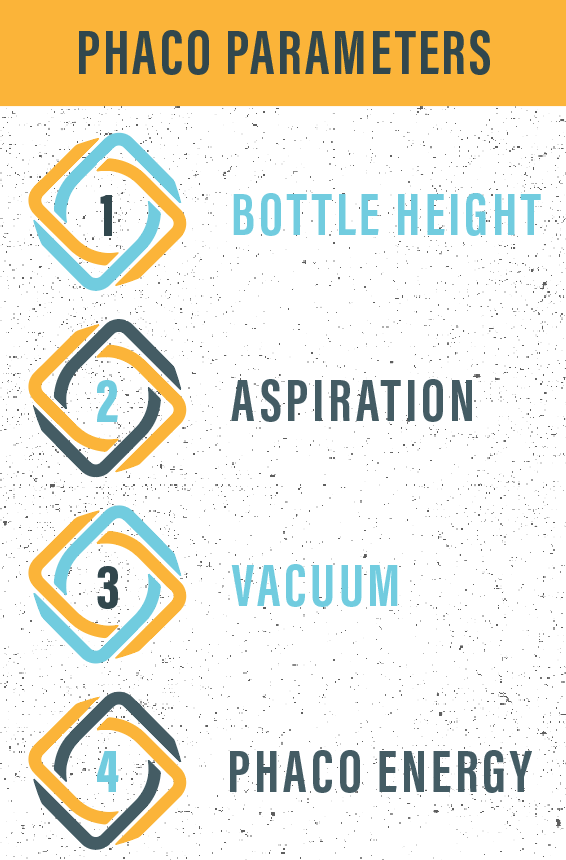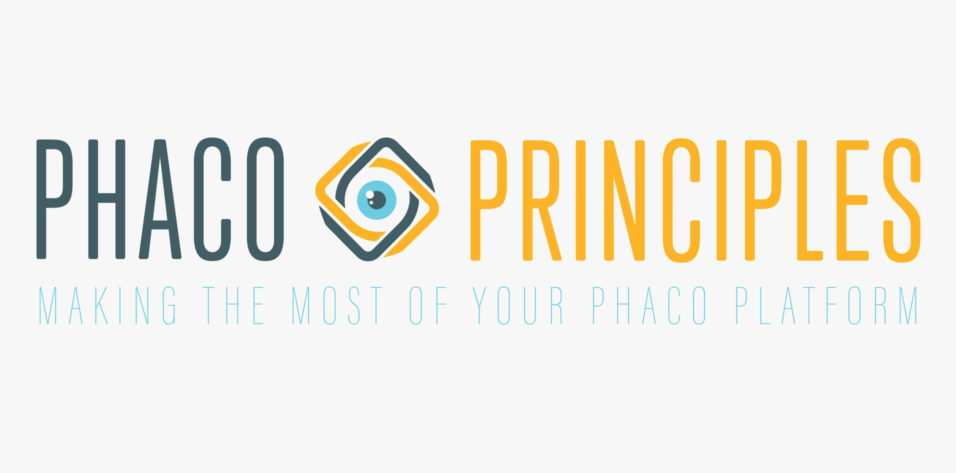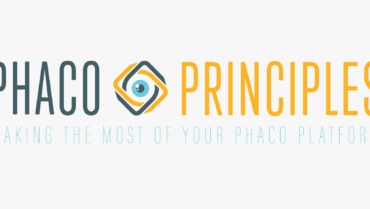supported by

Modern phaco technology aims to maximize efficiency while minimizing the risk of complications. Innovations to improve efficiency include advances in nonlongitudinal oscillation and improved followability of cataract fragments. Minimizing the risk of complications revolves around chamber stability and optimization of heat dissipation.
THE BASICS
The entire phacoemulsification procedure can be boiled down to four parameters: (1) bottle height (irrigation or inflow of balanced salt solution [BSS]), (2) aspiration (rate of BSS outflow), (3) vacuum (how much grip is applied), and (4) phaco energy (think: how hot the knife is as if you are cutting through butter).
Bottle height. Traditionally, phaco uses a passive process of infusion, in which a bottle of BSS is mounted onto the phaco machine and then raised and lowered to provide different amounts of flow. The higher the bottle is raised, the greater the inflow (as a result of gravity). Recent advances involve actively pressurizing the BSS in response to intraocular pressure (IOP) in an effort to maintain a stable chamber. Manufacturers have developed different approaches for active management of BSS inflow, including squeezing a bag of BSS and spiking a bottle of BSS with a pressurized air line.
Aspiration. Evacuation of fluid from the anterior chamber can be achieved with three different pump mechanisms: peristaltic, diaphragm, and Venturi (see PHACO PLATFORMS).

Vacuum. Aspiration and vacuum are closely linked, but they are not the same. Vacuum builds once the aspiration has drawn a lens piece to the tip and occlusion occurs. Once occlusion occurs, there is no BSS outflow, and holding pressure starts to build on the piece at the tip. Higher vacuum settings are typically used in specific steps of nucleus disassembly (chop) and in quadrant removal. For sculpting, a low vacuum setting is used because the goal is not to hold onto the lens material during this step.
Phaco energy. Emulsification of the lens material takes place through the oscillation of the phaco needle. This oscillation is driven by a piezoelectric crystal in the phaco handpiece. As the phaco needle reaches the end of a stroke and changes directions, tiny cavitation bubbles are created and collapse, resulting in emulsification. Phaco needle tips can have various configurations with respect to angle of the tip (straight vs angled or Kelman), size of the lumen, shape of the lumen (round, ellipsoid, bent, or flared), and bevel angle (0°, 15°, 30°, 45°, or 60°). The configuration of the phaco tip used in cataract surgery is based on surgeon preference.
PHACO PLATFORMS
Three commonly used phaco platforms available today are the Stellaris Vision Enhancement System (Bausch + Lomb), the Centurion Vision System (Alcon), and the Whitestar Signature Pro (Johnson & Johnson Vision). A brief overview of these systems and their specifications is below.
Stellaris Vision Enhancement System. The Stellaris Vision Enhancement System features StableChamber fluidics, with which surgeons can customize their fluidics preference, choosing between flow and vacuum control. Part of the platform’s Attune Energy Management System, the six-crystal Attune Handpiece delivers 28.5 kHz frequency for consistent power delivery and increased stroke length. In April, the Stellaris Elite received 510(k) clearance from the FDA. According to Bausch + Lomb, this new system offers new cutting-edge innovations and opportunities to continuously add upgrades and enhancements. The Stellaris Elite features AdaptiveFluidics, which combines precise aspiration control with predictive infusion management; this system aims to reduce IOP fluctuation and postocclusion surge through variable infusion pressure in response to changes in vacuum levels. On the Stellaris Elite, the Attune Energy Management System uses longitudinal cutting to complement the AdaptiveFluidics.
Centurion Vision System. The Centurion Vision System features a peristaltic pump that doubles the available flow rate and eliminates the small pulsations typically associated with peristaltic pumps, according to company literature.2 Its Active Fluidics technology is designed to optimize chamber stability by providing more consistent IOP over a wide range of aspiration flow rates by detecting flow rate, irrigation pressure, and vacuum and compensating for pressure loss. The Centurion’s OZil handpiece and innovative fluidics enable enhanced emulsification that requires minimal fluid. The Intrepid Balanced Tip is designed to reduce tip movement at the incision, enhancing torsional tip movement at the distal end and providing an alternate “straight” tip for torsional phaco.
Whitestar Signature Pro System. The Whitestar Signature Pro System provides on-demand fluidics with peristaltic, Venturi, or combination pump capabilities. Surgeons can employ the peristaltic pump for holdability and intraoperative control, utilize Venturi pump for followability and improved efficiency, or switch between both using the foot pedal. According to company literature, the Whitestar Signature Pro features automatic occlusion sensing, proactively adjusting to maintain IOP by continuously monitoring vacuum levels, anticipating pressure changes, and quickly responding to occlusion breaks.3 The Ellips FX Handpiece provides continuous elliptical ultrasound, which moves continuously in three dimensions for power and followability. The platform supports both curved and straight phaco tips.
EFFICIENCY
Phaco energy delivery. Traditionally, the phaco tip is only oscillated in a longitudinal fashion along the same axis as the shaft of the needle (x axis). However, recent advances have allowed for torsional or elliptical oscillations that create strokes and cavitations along the y and z axes for more efficient energy delivery.
Followability. The ability to attract cataract pieces to the phaco tip is important for efficient and safe surgery. Modern fluidics (attracting pieces) and more efficient energy delivery (repulsive force) have led to improvement in followability.
MINIMIZING RISK
Chamber stability. The combination of pressurized infusion of BSS into the anterior chamber (controlled by monitoring of IOP) and minimizing surge through venting technology and less-pliable aspiration lines has significantly improved chamber stability.
Heat dissipation. As the phaco needle oscillates, it creates not only cavitation bubbles but heat energy as well. This heat can be detrimental to endothelial cell counts and can cause wound burn. The ability to oscillate the tip in various planes has decreased the total energy delivered into the eye, and infusion sleeves have been modified to allow for safer heat dissipation.
CONCLUSION
By understanding the basics of phacoemulsification outlined above, surgeons can ensure that they are utilizing modern phaco technology to its fullest potential, with maximum efficiency and minimal risk.
1. Stellaris Vision Enhancement System. Bausch + Lomb. http://www.bausch.com/ecp/our-products/cataract-surgery/microsurgical-systems/stellaris-vision-enhancement-system. Accessed August 20, 2017.
2. Centurion Vision System. Alcon. https://www.myalconstore.com/cataract-surgery/centurion-phacoemulsification-system/. Accessed August 20, 2017.
3. Whitestar Signature Pro Phacoemulsification System. Johnson & Johnson Vision. https://www.vision.abbott/us/systems/phaco/whitestar-signature-pro.html. Accessed August 20, 2017.



